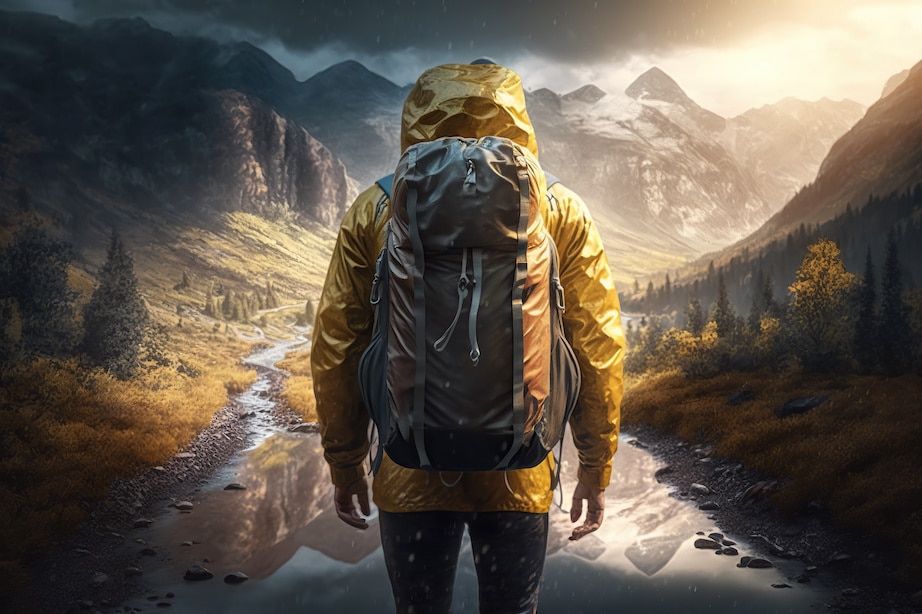If you asked me to list the attributes that allowed Sir Ernest Shackleton’s Trans-Antarctic Expedition (1914-1917) to survive more than a year stranded in Antarctica, I point to characteristics like leadership, adaptability, teamwork, ingenuity, and perseverance.
What Shackleton and his men employed was a mindset that intentionally embraced a set of values and behaviors that are essential for success and survival in extreme conditions. Here at The National Center for Outdoor & Adventure Education (NCOAE), we refer to that as having an expedition mentality (and I’ll have more to say about that later in today’s post).

If you’ve ever spent a full week backpacking in the Appalachian Mountains of western North Carolina between May and August, chances are you encountered some rain somewhere on the trail.
That’s because that region of the country — particularly in Pisgah National Forest — encompasses areas categorized as Appalachian temperate rainforest that traditionally receive more than 100 inches of rain per year. Generally, this rain is atemporary occurrence, with maybe a morning shower or an evening storm rolling through.
Or you might get a full day of steady rainfall followed by a glorious day of gear-drying sun. And if you’re an experienced backpacker in the Pisgah National Forest, you’ve most likely experienced one of those weeks where it rains almost all day, every day. Spending an entire week outdoors in a steady rain might not be the first choice for most backcountry enthusiasts, but there are great lessons to be learned when we face challenges that are beyond our control.
Adding Rain to Your Pre-Trip Checklist
Any checklist that accounts for rain in your preparations should begin with inspecting — and repairing if necessary — any damage to the rainflies on all tents. A tent rain fly is an extra piece of fabric that protects your tent from rain and snow. Also, make sure your waterproof jacket and pants are at the ready in your backpacks.
Double check that a communal group tarp is ready to be tied up using preferred knots upon arrival at your campsites, and that you brought synthetic layers of clothing that are constructed to wick and dry — unlike cotton, which is the bane of the wet hiker.
Being physically prepared for the rain helps us stay safe and comfortable in the backcountry. But it certainly doesn’t mean we can control the weather. And while it’s easy to follow the Leave No Trace principle of the four D’s of gathering firewood — down, dead, dinky, and distant — there’s one D you find difficult to locate– dry! We would also be remiss not to mention the ubiquity of mud and gray skies. All of this adds up to a situation that poses a direct challenge to our positive mental attitude.
The Benefits of Expedition Mentality
And again, that’s something that we here at NCOAE believe is at the core of an expedition mentality. To us, expedition mentality is a mindset of planning, preparing, and acting in the best interest of sustaining emotional and physical safety and comfort of self and others, regardless of external forces or circumstances beyond our control.
When we truly embrace the expedition mentality, it allows us to push through inconvenience, frustration, and discomfort. We come to know that the only thing we can truly control in any situation is the way we respond to it. Which is what empowers us as individuals and groups that choose to work together in the backcountry and elsewhere. We can use this experience to learn how to push through a wet and rainy week in the outdoors with gratitude for Mother Nature in our heart and a smile on our face, as well as the ability to handle similar issues we may encounter upon returning home.
Through reflection and conversation with our fellow backcountry travelers and group members we can process these uncomfortable and challenging experiences, generalize them to other parts of our lives, and apply them situations that are far from an Appalachian temperate rainforest.
Because at some point, we know the rain will stop and the sun will begin to send its hidden, golden rays through the clouds. That’s when we know the appreciation we feel for its bright light and warming radiation is only magnified by its temporary absence. We can bask in this light and the knowledge that we have shown resilience and grown as both individuals and group members. And we’ve proven to ourselves that there is power in choosing to react positively to challenging situations.
= = = = = = = = = =
About the Author: Cameron “Cam” Francisco, MEd, is the Associate Director of Outdoor Education at The National Center for Outdoor & Adventure Education (NCOAE). Prior to joining the team at NCOAE, Cam spent 19 years as an independent school educator and administrator. A member of the Association for Experiential Education (AEE), Cam is a certified Wilderness First Responder (WFR) and is certified in CPR by the Red Cross. His hobbies include fishing, soccer, skateboarding, hiking, and camping.
TALK TO US
Have any further questions about our courses, what you’ll learn, or what else to expect? Contact us, we’re here to help!
Leave a comment